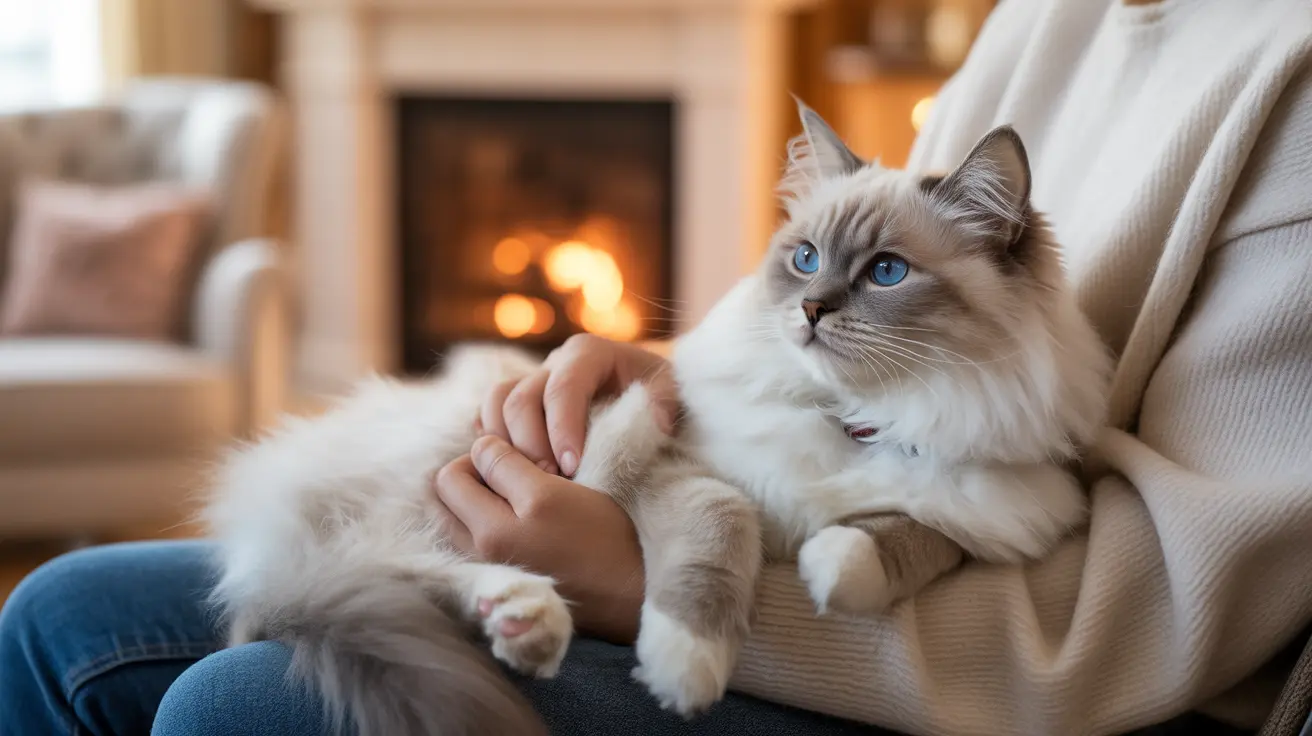The Science Behind Your Cat's Lap-Sitting Behavior
When your cat chooses to sit on you, they're engaging in behavior that stems from both instinct and emotional connection. This seemingly simple act involves multiple aspects of feline psychology and physical needs.
Expressing Trust and Affection
When a cat sits on you, they're displaying a profound level of trust. In the wild, cats only rest in locations where they feel completely safe, as this is when they're most vulnerable. By choosing your lap, your cat is essentially saying, "I trust you to protect me while I rest."
Temperature Regulation and Comfort
Cats naturally seek out warm spots to maintain their body temperature, which needs to stay between 100.5-102.5°F. Your body heat makes you an ideal warming station, especially during cooler weather or for cats with thinner fur.
The Social Bonding Aspect
Cats use physical proximity as a way to strengthen social bonds, both with other cats and their human family members. When your cat sits on you, they're reinforcing their connection to you in several ways:
Scent Marking and Territory
Your cat has scent glands on their face, paws, and flanks. When they sit on you, they're leaving their scent behind, effectively marking you as part of their territory and trusted social group.
Creating Routine and Security
Many cats develop regular patterns of when they prefer to sit on their owners, often coinciding with quiet activities like reading or watching TV. This routine helps create a sense of security and predictability in their environment.
Health and Behavioral Implications
While lap-sitting is typically a positive behavior, changes in this pattern can sometimes indicate health or emotional issues:
Normal vs. Concerning Behavior
If your typically independent cat suddenly becomes clingy and sits on you more frequently, it could signal anxiety, illness, or discomfort. Conversely, if a usually affectionate cat stops sitting on you, it might indicate pain or stress.
Frequently Asked Questions
Why does my cat sit on me and purr or knead?
Purring and kneading while sitting on you are signs of contentment and security. These behaviors are reminiscent of kittenhood when cats would knead their mother while nursing. The combination of sitting, purring, and kneading indicates your cat feels completely safe and happy in your presence.
Is my cat sitting on me because it feels warm and comfortable?
Yes, warmth is a significant factor in why cats choose to sit on their owners. Cats are naturally drawn to warm spots to maintain their body temperature, and human bodies provide an ideal heat source, especially during cooler weather.
Does a cat sitting on me mean it trusts and feels safe with me?
Absolutely. When a cat chooses to sit on you, it's a clear sign of trust and security. Cats are vulnerable while resting, so selecting your lap as their resting spot indicates they trust you completely with their safety.
How can I tell if my cat sitting on me is seeking attention or showing affection?
Look for additional body language cues: relaxed posture, slow blinking, and gentle purring typically indicate affection, while pawing, meowing, or restlessness might suggest attention-seeking behavior.
Should I be concerned if my cat suddenly starts sitting on me more often than usual?
Sudden changes in behavior, including increased lap-sitting, could indicate underlying health issues or anxiety. If this change is accompanied by other unusual behaviors or symptoms, consult your veterinarian.
Conclusion
Your cat sitting on you is a beautiful expression of trust, affection, and social bonding. This behavior combines their natural instincts for warmth and security with their emotional connection to you as their caregiver. Understanding and appreciating this interaction can help strengthen your bond with your feline companion while ensuring their physical and emotional needs are met.






